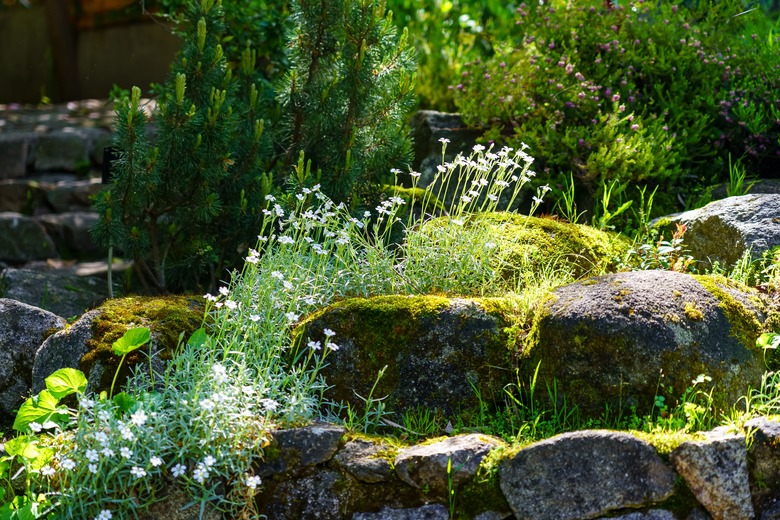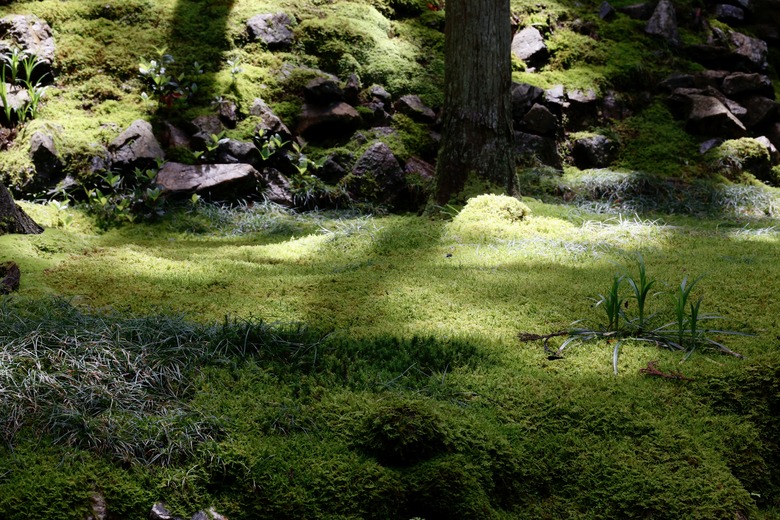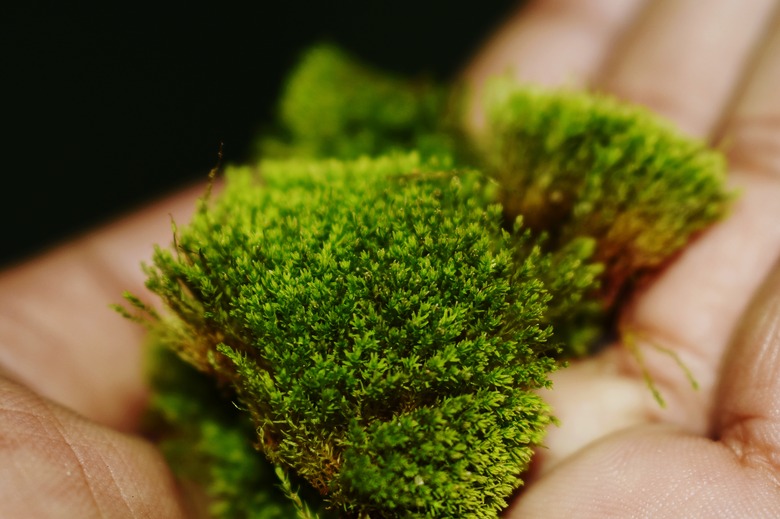How To Grow Moss On A Stone
Moss-covered rocks add an earthy, established look to gardens, but if you're waiting for moss to grow naturally, you may have to wait for years. Fortunately, you can hasten the process by colonizing and growing moss on stone using a few simple ingredients that are available at garden stores and in your own refrigerator.
The process of growing moss on rocks is fairly straightforward, but it's not suitable for every landscape. Moss needs cool, moist and shady conditions to grow well, so gardeners with a hot garden exposed to full sun may find the process difficult and frustrating, if not impossible.
All About Moss
The two categories of moss are acrocarpous moss and pleurocarpous moss. Acrocarpous moss grows slowly and has an upright growth habit, while pleurocarpous moss has a low-growth, mat-like growth habit and spreads more quickly.
Both types are grown in moss gardens, but pleurocarpous moss is a better choice for growing on rocks in a garden because it produces more rhizoids, which are the structures that moss produce to spread and cling to rocks and other substrate.
When choosing species of moss to grow on rocks, choose a mix of those that tolerate sun and shade to increase the odds of successful coverage. Some suitable types of moss include the sun-tolerant sidewalk moss (Bryum caespiticium), drought-tolerant cushion moss (Leucobryum glaucum) and feather moss (Hypnum imponens).
Preparing to Grow Moss on Rocks
Moss is one of the most low-maintenance plants to grow, but only if you choose a planting site with the right growing conditions, as well as rocks that will provide good structure for moss growth.
- Grow moss in a shady area that receives little direct sunlight throughout the hottest part of the day. Logee's Plants recommends a spot with eastern, western or northern exposure when growing club moss (Selaginella spp.; zones 9 to 10).
- Choose a growing location with high humidity and acidic soil with a pH lower than 7. A growing location against a north-facing wall is best, because it will provide shade and wind shelter.
- Avoid growing locations that are exposed to wind and sun. Also, beds with very porous soil are not ideal, because the ambient humidity will be lower than in areas with loamy or clay-based soil.
Smooth rock doesn't provide the right structure for growing moss, so look for rough stones with plenty of nooks and crannies on which the moss rhizoids can take hold. Lava rock works well for growing moss, but any porous, rough-textured stone will do—even chunks of concrete.
Tip
Coniferous trees provide good growing conditions for moss beneath their boughs.
Growing Moss on Rocks
Growing moss on rocks differs from growing other plants, which are typically started in soil using seeds or cuttings. Moss can be planted as large sheets or as plugs, similar to planting a lawn but with a different technique.
You need a slurry of moss mixed with an acidic, nutrient-rich additive to coat the rocks so that the rhizoids will spread and adhere to the surface. This "moss milkshake" must contain bits of live moss and rhizoids, preferably derived from several different varieties of moss.
1. Put pieces of moss into a coffee grinder or blender and blitz until it forms a fine powder. Use a coffee grinder or blender that is dedicated to this purpose rather than one used to prepare food. 2. Combine 2 parts moss, 1 part water, and 1 part buttermilk or plain yogurt. The University of Oregon recommends a different DIY slurry recipe: 1 cup of moss powder, 1 pint or 2 cups of buttermilk and 2 large eggs, which creates a slurry with greater adhesion. 3. Apply the solution to moist rocks using a large paintbrush, making an even layer over the entire surface.
Applying the moss slurry to the rocks is only the beginning of the process. You must also keep the moss slurry, rocks and surrounding area moist while the moss becomes established.
Mist immature patches of moss with a spray bottle filled with water, while established moss on rocks can be watered with a sprinkler. The trick is to keep the area moist without washing away the slurry.
Tip
Mold growth is common when growing moss from a slurry. If the mold growth is extensive, you may need to clean your rocks and start again!



